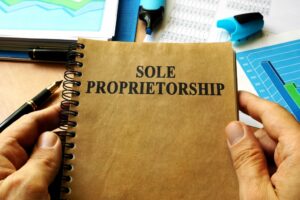

The direct write-off method is the simplest method to book and record the loss on account of uncollectible receivables, but it is not according to the accounting principles. It also ensures that the loss booked is based on actual figures and not on appropriation. But it violates the accounting principles, GAAP, matching concepts, and a true and fair view of the Financial Statements. But, the write off method allows revenue to be expensed whenever a business decides an invoice won’t be paid. This makes a company appear more profitable, at least in the short term, than it really is. How long is appropriate for a company to leave past due A/R on the books before writing it off?
What is the Allowance Method?
- The longer a debt has been outstanding, the less likely it is that the balance will be collected.
- Seeing and considering all these points, it is concluded that only being a simple method to record the transaction is not the requirement of an accounting transaction.
- But, under the direct write off method, the loss may be recorded in a different accounting period than when the original invoice was posted.
- The direct write off method is simpler than the allowance method as it takes care of uncollectible accounts with a single journal entry.
It is the most theoretically correct way to deal with bad debts. However, it requires an estimate of bad debts, rather than the specific identification of bad debts, and so can be less accurate than the direct write-off method. However, the direct write-off method must be used for U.S. income tax reporting. Apparently the Internal Revenue Service does not want a company reducing its taxable income by anticipating an estimated amount of bad debts expense (which is what happens when using the allowance method).
Impact on Financial Statements


The allowance method creates bad debt expense before the company knows specifically which cash flow customers will not pay. Based on prior history, the company knows the approximate percentage or sales or outstanding receivables that will not be collected. Using those percentages, the company can estimate the amount of bad debt that will occur. That allows us to record the bad debt but since accounts receivable is simply the total of many small balances, each belonging to a customer, we cannot credit Accounts Receivable when this entry is recorded. The method does not involve a reduction in the amount of recorded sales, only the increase of the bad debt expense. For example, a business records a sale on credit of $10,000, and records it with a debit to the accounts receivable account and a credit to the sales account.


Recording Bad Debt Expense
If using sales in the calculation, you are calculating the amount of bad debt expense. Bookkeeping for Painters If using accounts receivable, the result would be the adjusted balance in the allowance account. We already know this is a bad debt entry because we are asked to record bad debt. We are also told that the company is estimating bad debt, so this is clearly not a company that uses direct write-off. Therefore, we will be using Allowance for Doubtful Accounts and Bad Debt Expense.
The Difference Between the Direct Write-Off and Allowance Methods
- This is very similar to the adjusting entries involving shop supplies or prepaid expenses.
- When an account is deemed to be uncollectible, the business must remove the receivable from the books and record an expense.
- It can also result in the Bad Debts Expense being reported on the income statement in the year after the year of the sale.
- This approach aligns with the cash basis of accounting, where transactions are recorded when cash changes hands.
- Transitioning from the direct write-off method, the allowance method provides an alternative approach to handling bad debts.
- The direct write off method involves charging bad debts to expense only when individual invoices have been identified as uncollectible.
In the allowance method, businesses create an allowance for doubtful accounts, which serves as a contra-asset account on the balance sheet. This account estimates the amount of accounts receivable that may not be collected. By adjusting this allowance periodically based on historical data, industry standards, or economic conditions, companies can better anticipate potential losses. The adjustment process involves debiting bad debt expense and crediting the allowance for doubtful accounts. For example, a company may recognize $1 million in sales in one period, and then wait three or four months to collect all of the related accounts receivable, before finally charging some bad debts off to expense. This creates a lengthy delay between revenue recognition and the recognition of expenses that are directly related to that revenue.


- We know some accounts will go bad, but we do not have a name or face to attach to them.
- When doing the calculations, it is important to understand what the resulting number actually represents.
- Allowance for Doubtful Accounts is where we store the nameless, faceless uncollectible amount.
- The calculation here is a few more steps but uses the same methodology used in all the other methods.
- This distortion goes against GAAP principles as the balance sheet will report more revenue than was generated.
- Kristin is a Certified Public Accountant with 15 years of experience working with small business owners in all aspects of business building.
This is considered an expense because bad debt is a cost of doing business. Part of the cost of allowing customers to borrow money, which is essentially what a customer is doing when the business allows the customer time to pay, is the expense related to uncollectible receivables. The timing of these write-offs can create income statement volatility. Since bad debt expenses are recognized irregularly, this method can lead to sudden swings in net income. For instance, a company experiencing a year with a substantial write-off may report lower profitability compared to a year with minimal write-offs. Such fluctuations can challenge investors and analysts who rely on consistent financial performance metrics.


The firm then debits the Bad Debts Expenses for $ 5,000 and credits the Accounts Receivables for $ 5,000. The firm direct write-off method partners decide to write off these receivables of $ 5,000 as Bad Debts are not recoverable. Allowance for Doubtful Accounts had a credit balance of $9,000 on December 31. Notice how the estimated percentage uncollectible increases quickly the longer the debt is outstanding. The aging method is a modified percentage of receivables method that looks at the age of the receivables. The longer a debt has been outstanding, the less likely it is that the balance will be collected.
Accounts Receivable Ratios
The $14,800 is the amount of Bad Debt Expense that must be recorded. The company estimates that 1.5% of credit sales are uncollectible. Allowance for Doubtful Accounts is where we store the nameless, faceless uncollectible amount. We know some accounts will go bad, but we do not have a name or face to attach to them. Once an uncollectible account has a name, we can reduce the nameless amount and decrease Accounts Receivable for the specific customer who is not going to pay.